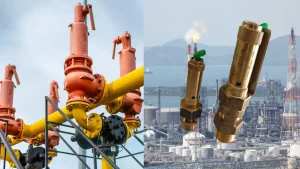Mining operations involve high-risk environments where pressure vessels and pressure equipment play a critical role in ensuring smooth and efficient processes. From compressed air systems to hydraulic pressure vessels, these components must function reliably to maintain productivity and safety. Regular audits of pressure vessels and equipment are essential to prevent accidents, ensure regulatory conformity, and optimize performance. In Australia, these audits are governed by strict laws and standards to protect workers and maintain industry integrity.
Why Regular Audits Are Necessary
1. Ensuring Worker Safety
Mining sites involve extreme conditions, and pressure equipment failures can result in catastrophic incidents, including explosions, leaks, and structural damage. Regular audits help identify wear and tear, corrosion, or faults before they lead to hazardous failures, ensuring the safety of man and machine on-site.
2. Conformity with Australian Standards and Laws
The mining industry in Australia is subject to stringent regulations regarding pressure vessel safety. Organizations must comply with:
- AS 1210 – Pressure Vessels
- AS 3788 – Pressure Equipment – In-Service Inspection
- Work Health and Safety (WHS) Regulations
- Safe Work Australia Guidelines
- State-based legislation (e.g., WorkSafe Victoria, SafeWork NSW, Resources Safety & Health Queensland, etc.)
Regular audits ensure conformity with these regulations, preventing costly legal penalties and operational shutdowns.
3. Preventing Costly Equipment Failures
A sudden pressure vessel or equipment failure can halt mining operations, leading to significant financial losses. Routine audits help detect early signs of damage, allowing for timely maintenance and preventing unexpected downtime.
4. Extending Equipment Lifespan
Pressure vessels and equipment are substantial investments. Auditing and proper maintenance extend their lifespan by preventing premature wear and breakdowns, ultimately saving money in replacement costs.
5. Optimizing Operational Efficiency
Efficient pressure equipment leads to improved energy usage and performance in mining processes. Regular audits ensure that pressure vessels and associated equipment are operating at peak efficiency, reducing waste and improving overall productivity.
Key Elements of a Pressure Vessel Audit
1. Visual Inspections
Auditors examine pressure vessels for visible signs of wear, corrosion, or leaks. External and internal inspections help identify potential hazards before they become major issues.
2. Non-Destructive Testing (NDT)
Techniques such as ultrasonic testing, radiography, and magnetic particle testing help assess the integrity of pressure vessels without causing damage.
3. Pressure Testing
Hydrostatic and pneumatic tests are conducted to check if the vessel can withstand operational pressures safely.
4. Valve and Safety Mechanism Inspections
Safety valves, relief valves, and pressure gauges must function correctly to prevent dangerous overpressure situations. These components are tested for accuracy and responsiveness.
5. Documentation and Record-Keeping
A thorough audit includes detailed records of inspections, tests, and maintenance history. Proper documentation ensures conformity with Australian safety regulations and helps in future audits.
How Often Should Audits Be Conducted?
The frequency of pressure vessel audits in Australia depends on several factors, including operating conditions, equipment age, and regulatory requirements. However, best practices include:
- Annual inspections as per AS 3788 guidelines for general condition assessments.
- More frequent audits for high-pressure or very critical equipment.
- Immediate audits after significant events such as system overpressure, impact damage, or suspected defects.
Additionally, many Australian regulatory bodies require pressure vessels to be registered and periodically inspected to ensure conformity with WHS laws.
Conclusion
Regular audits of pressure vessels and pressure equipment in mining are essential for ensuring safety, conformity, and efficiency. By identifying potential risks early, mining companies can prevent accidents, reduce downtime, and extend equipment life.
In Australia, strict regulations such as AS 3788 and WHS laws mandate rigorous inspection schedules, making conformity a top priority for all mining operations. Investing in routine inspections and maintenance is not just a regulatory obligation but a strategic move that enhances overall operational reliability.
Mining companies should prioritize audit schedules and engage qualified professionals like us, to assess and maintain pressure equipment, ensuring a safer and more productive working environment.






